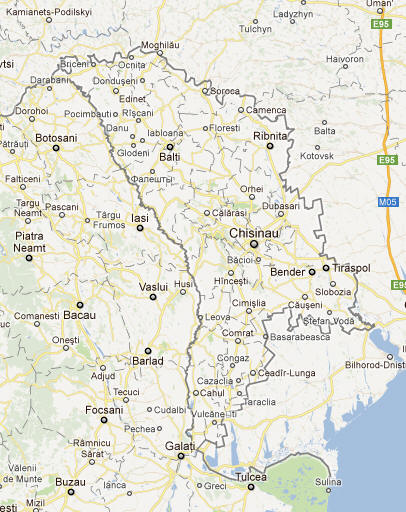Moldova Facts
Moldova, State of Southeastern Europe; 33,800 km², 3.5 million residents (2019).Moldova borders Ukraine, north, east and south, and Romania to the west. The capital is Chișinău (493,000 residents, 2014).

Country facts
- Republica Moldova / Republic of Moldova
- Country abbreviation: MD
- Area: 33 800 km²
- Population (2019): 3.5 million residents
- Capital: Chișinău
- Main languages: Romanian (Moldovan)
- State: Republic
- Head of State: Igor Dodon
- Head of Government: Ion Chicu
- Per capita GDP (2018): US $ 3 189
- GNI per capita (2018): US $ 2,990
- Currency unit: 1 leu = 100 bani
- Currency code: MDL
- Country number (telephony): 373
- Internet domain name: md
- Time difference compared to Sweden: +1
- National Day: August 27 (Independence Day, 1991)
Nature
- Land use: forest (11%), agricultural land (76%), other (13%)
- Highest mountain: Bălăneşti (429 m asl)
- Longest river: Nistru (Dnestr) (1,370 km)
Population
- Population density (2019): 104 residents per km²
- Natural population growth (2019): 0%; birth rate 10 ‰, death rate 10 ‰
- Age structure (2019): 0-14 years (16%), 15-64 (72%), 65- (12%)
- Average life expectancy (2019): men 69 years, women 77 years
- Infant mortality (2019): 10 per 1,000 live births
- Population forecast 2050: 3 million residents
- HDI (2017): 0.700 (place 112 of 189)
- Urbanization rate (2019): 43%
- Most populous cities (2014): Chișinău (493,000 residents), Tiraspol (133,800), Băltși (105,000).
Business
- Industry’s contribution to GDP (2017): agriculture (18%), industry (20%), service (62%)
- Exports (2017): US $ 1,858 million
- Main export products: food, textiles, machinery
- Main exporting countries: Romania, Russian Federation, Italy
- Imports (2017): US $ 4 427 million
- Main import products: oil, machinery, chemicals
- Main importing countries: Romania, Ukraine, Russian Federation
- Railway network (2014): 1 200 km
Moldova is part of the Russian platform, and the soil is largely made up of loose soil, in which the many rivers cut deep river valleys. Incidentally, the topography is not varied. Moldova has a continental climate with cold winters and hot to hot summers.
The country’s legislative power lies with a single-chamber parliament, whose members are elected for four years. Parliament elects president for four years. Moldova became independent in 1991.
Agriculture is the most important part of the country’s economy. The industry is poorly developed and is dominated by the food industry and the production of agricultural implements. The most important task after independence has been to increase Moldova’s economic independence and to introduce a market economy. In 1992, a cautious privatization program was launched, but it was not until the late 1990s that reform work began. Since 2000, the economy has grown, but private investment is still low. As the domestic market is small and energy imports are large, the country is very dependent on foreign trade. The economy is hampered by political instability, corruption and great concern about energy supplies from the Russian Federation as well as the political situation surrounding the transnistrian breakaway region.
Moldova Map














































